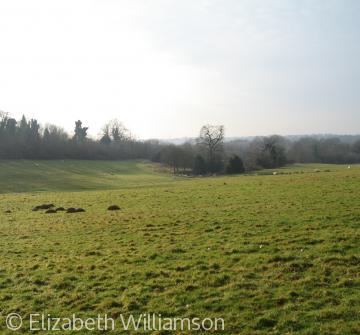War and Conflict
 The site in Sussex where the battle of Hastings was fought in 1066.
The site in Sussex where the battle of Hastings was fought in 1066.War and conflict can be traced in every English county. Evidence of territorial defence from the Iron Age to the Cold War is manifest in earthen forts, stone castles, naval dockyards, sea defences and early warning stations, all of which stand in the commanding positions their purposes demanded. Some sites of war are less conspicuous: battlefields, military encampments and airfields have been subsumed into the agricultural or urban landscape.
The last invasion of England was in 1066, when William the Conqueror defeated the English king Harold and established Norman rule. Since then our island geography has protected our heritage from the destruction caused by war. It also has left a legacy of military monuments which were raised in response to threatened invasion, and have survived because of the relatively peaceful passage of English history.
Many defensive sites were chosen so effectively that they have never been abandoned. Dover castle in Kent is a fine, but not unique, example of such a site. The Romans built a lighthouse on an Iron Age fort, which was developed by the Anglo-Saxons into a fortified town. That 'burh' was strengthened by the Normans who built a castle there. It continued as a military base, protecting the English Channel at its narrowest point, until World War 2 when the tunnels cut into the cliffs during the Napoleonic wars became a bomb-proof command post. After 1945 the tunnels were earmarked as a Regional Centre of Government, to be activated in the event of a nuclear war.
Civil wars and conflicts have had physical, political and social legacies, There have been many types of conflict - between landlord and peasant, employer and employed, between the government and the governed, and between the forces of modernisation and those threatened by it, as in the Swing Riots of the 1830s and the demonstrations during the miners' strike in the 1980s.




